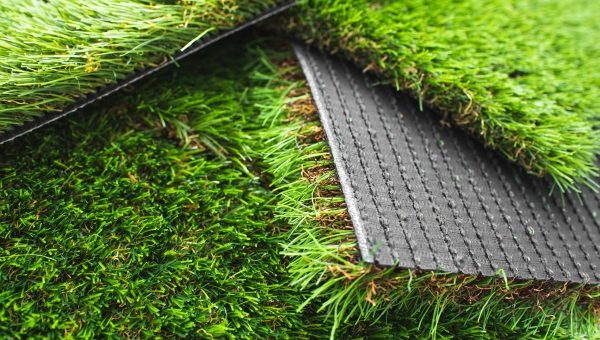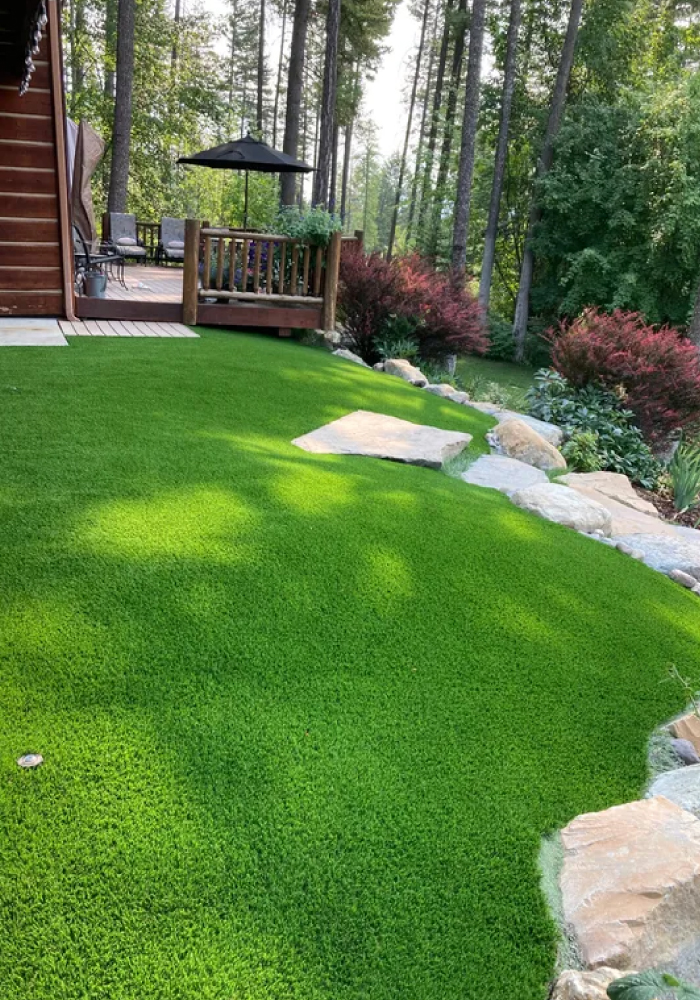Transform Your Outdoor Space with Arizona Artificial Turf for a Evergreen Green Look
Transform Your Outdoor Space with Arizona Artificial Turf for a Evergreen Green Look
Blog Article
Look Into the Environmental Advantages of Opting for Artificial Turf Solutions
The fostering of man-made grass services offers an engaging chance to attend to pressing ecological difficulties. By considerably reducing water use and lessening the application of damaging chemicals, these alternatives not just advertise sustainable landscape design but additionally secure regional ecosystems. In addition, the lower carbon impact related to reduced upkeep activities adds to a much more sustainable technique to land management. Nonetheless, the effects of these benefits expand past simple preservation efforts, questioning concerning their long-term effect on environment preservation and general eco-friendly balance. Checking out these dimensions exposes a complicated interaction worth considering.
Water Preservation Perks
One of the most significant benefits of fabricated turf is its capacity to conserve water. In comparison, man-made turf does not need watering, dramatically reducing the overall demand for water resources.
By getting rid of the requirement for regular watering, synthetic grass adds to sustainable landscape practices and assists mitigate the ecological influence of extreme water consumption. In addition, the conservation of water includes the reduction of drainage, which can result in dirt disintegration and waterway air pollution.
In addition, the installation of fabricated grass permits home owners and municipalities to designate water sources more effectively, concentrating on vital usages such as alcohol consumption water and farming. The shift towards fabricated turf not only promotes accountable water use but also aligns with broader environmental objectives targeted at preserving natural deposits.
As communities progressively prioritize sustainability, the water conservation benefits of man-made lawn offer an engaging instance for its fostering in commercial and domestic landscaping jobs.
Minimized Chemical Use
The shift to synthetic grass dramatically lowers the dependence on chemical therapies frequently used in natural grass maintenance. Typical lawn management generally involves the application of plant foods, herbicides, and chemicals to advertise development and control parasites. These chemicals can posture dangers to human health and wellness, local wildlife, and the setting, adding to soil and water contamination.
In contrast, man-made turf eliminates the demand for these dangerous substances. By lessening the release of artificial substances right into the community, fabricated turf promotes much healthier soil and water systems.
Additionally, the lack of chemical drainage connected with fabricated turf setups aids shield regional rivers from pollution, supporting water life and preserving biodiversity. Turf installation phoenix az. As neighborhoods significantly focus on sustainable practices, selecting synthetic grass presents a sensible service that lines up with ecological preservation objectives. With this change, homeowner can enjoy lush eco-friendly areas without endangering ecological wellness, leading the way for an extra lasting future
Lower Carbon Footprint

Furthermore, the installment of synthetic grass can cause substantial water conservation. All-natural grass call for considerable amounts of water for irrigation, which not only contributes to the carbon footprint connected with water removal and treatment however likewise pressures neighborhood water sources. In contrast, man-made lawn requires very little upkeep, requiring no watering, thus substantially lowering water use and its linked energy costs.
Additionally, the longevity of synthetic turf adds to its lower carbon influence. With a life-span of as much as 15 years or more, the demand for constant substitutes is reduced, leading to less waste and reduced power intake in production and disposing of traditional lawn choices. Generally, synthetic grass presents a sustainable option for environmentally aware landscaping.
Habitat Conservation
Environment conservation is a vital consideration in the debate over landscape design selections, specifically when comparing synthetic grass to natural turf. Natural yard lawns frequently call for considerable maintenance, consisting go of making use of chemicals, fertilizers, and herbicides, which can negatively impact regional ecological communities. These chemicals can seep into the soil and rivers, hurting native vegetation and fauna and interfering with regional environments.
Man-made grass gets rid of the requirement for dangerous chemicals, therefore protecting nearby wildlife and preserving the stability of surrounding environments. The setup of man-made lawn can lead to the conversion of previous yard locations right into even more biodiverse landscapes, such as pollinator yards or indigenous plant areas, which can support local wild animals.
Eventually, the shift to synthetic grass not just preserves water and decreases maintenance efforts however likewise fosters a more unified partnership in between human activities and the natural surroundings, promoting habitat conservation in the process.
Long-Term Sustainability
Long-term sustainability is an important consider assessing the benefits of fabricated grass over traditional turf lawns. One of the most significant advantages of synthetic grass is its resilience; it can last up to 15-20 years with marginal maintenance, whereas all-natural yard calls for frequent reseeding and substitute. This durability reduces the demand for consistent resources, such as water, plant foods, and pesticides, which are important for keeping a healthy and balanced turf yard.
Furthermore, synthetic grass contributes to a decrease in carbon discharges related to grass treatment tools. Standard lawns commonly need gas-powered mowers, trimmers, and blowers, every one of which contribute to air contamination. Artificial turf companies phoenix. On the other hand, man-made lawn gets rid of the demand for such equipment, advertising a cleaner atmosphere
In addition, the production of man-made lawn progressively utilizes recycled materials, improving its sustainability account. As manufacturers embrace green practices, the environmental footprint of synthetic grass proceeds to diminish.

Conclusion
The adoption of synthetic grass solutions offers considerable environmental benefits, including significant water conservation, lowered reliance on dangerous chemicals, and a lower carbon impact. Fabricated grass help in protecting natural environments by lessening land disruption and promoting lasting sustainability via the usage of resilient materials. Collectively, these elements emphasize the potential of man-made turf to contribute favorably to ecological health and wellness and use a sensible alternative to conventional landscape design techniques in a progressively resource-conscious world.
In comparison, synthetic lawn does not require watering, significantly minimizing the total demand for water resources. By reducing the release of synthetic compounds right into the ecological community, artificial turf advertises healthier soil and water systems.
Additionally, the setup of man-made lawn can result in substantial water conservation. In comparison, man-made grass requires very little maintenance, needing no watering, consequently substantially lowering water use and its associated energy expenses.

Report this page